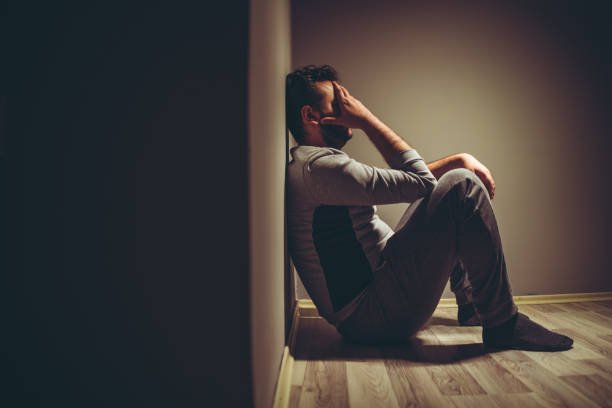
Analysis of Depression: 4 Major Causes, 8 Types, Exploring the Meaning of Persistent Depression
According to estimates from the World Health Organization (WHO), in 2015, more than 300 million people worldwide were affected by depression and anxiety disorders. Another study showed that from 1990 to 2010, the number of people affected by depression increased by 37.5%.
With the improvement of material life, people’s minds have not become healthier. Many desires and worries in life, such as economic pressure, disharmony in interpersonal relationships, excessive self-requirements or emotional harm, all continue to affect their health. People’s physical and mental health.
Patients with depression may find that they often feel depressed or sad, but they do not realize that they may be suffering from depression. Patients often believe that various symptoms are caused by physical discomfort, so they fail to seek help early, which can lead to more serious problems.
It is recommended that the public should pay more attention to their own mental health, always check themselves and care about the mental state of others, and if they find signs of depression, they should receive early treatment. In this article, we will introduce the types of depression, as well as the causes, symptoms and treatments of depression, to help you detect your symptoms early and get rid of depression.
What is depression?
From a purely physiological perspective, depression is a disease that occurs in the brain. Due to the imbalance of certain chemicals in the brain, it affects the areas of the brain that regulate emotions, including the amygdala, thalamus and hippocampus. Return to (Hippocampus), and various mental symptoms appear. But in fact, depression is also affected by psychological and social factors and cannot be attributed to a single cause.
Depression is an inevitable physical adaptation condition for everyone when they experience setbacks. In life, everyone has encountered sad and painful things more or less, but most people have a lighter degree of depression, and some people have a lower degree of depression. It can be called depression only when it is severe and the depression cannot be adjusted, and it meets the diagnostic criteria and has lasted for more than 2 weeks. At this time, treatment must be received to prevent the condition from worsening.

Depression is divided into 8 categories
There is not just one kind of depression. According to different manifestations and influencing factors, the fifth edition of the Diagnostic and Statistical Manual of Mental Disorders (DSM-5) divides depression into the following types:
- Persistent depressive disorder: also known as dysthymia. The patient’s depressed mood has been chronic for at least 2 years.
- Major Depressive Disorder: Severe symptoms of depression. The patient’s depressive symptoms seriously affected his life for more than 2 weeks.
- Premenstrual Dysphoric Disorder
- Postpartum depression: Severe depressive symptoms that occur during pregnancy or after delivery. The patient may feel extremely tired, sad, or anxious.
- Psychotic depression: Patients have severe depressive symptoms combined with other mental illnesses.
- Adjustment Disorders: Depressive symptoms caused by stress. Individuals may develop emotional or behavioral symptoms within three months of encountering the stressor. Once the stressor disappears, patients generally recover within six months.
- Seasonal affective disorder: It tends to occur in winter when there is less sunshine, and it is easy to relapse year after year.
- Bipolar disorder: commonly known as bipolar disorder. It is not a type of depression, but it is included in the discussion because the symptoms are similar to those of major depression when patients are depressed.
Why does depression occur? 4 causes of depression
- Genetic inheritance: Studies have pointed out that about 30% of people who are more likely to suffer from depression are related to genetic inheritance.
- Monoamine hypothesis: Insufficient function of neurotransmitters (such as serotonin and dopamine) in the brain causes depression.
- Life stress: There are many things in life, such as quarreling with others, financial crisis, unemployment, financial pressure of having children, loneliness or losing a loved one, etc., which may cause people to suffer from depression. (Recommended reading: “Heartbreak” may hurt the heart! How to get over the grief of losing a relative or friend)
- Personality: If a person’s personality is pessimistic and paranoid, he will often think about things in the worst direction and be indifferent to good things, but will magnify and resent bad things. Such people are also more likely to suffer from depression. disease.
Depression symptoms
Common physical symptoms of depression are as follows:
- Lack of energy and energy, even when not doing anything.
- Insomnia and poor sleep quality mean that you can’t fall asleep even if you are tired, and you will be just as tired if you sleep for a long time.
- Speech and movements become slower.
- Decreased appetite and sudden weight loss.
- Lose your “sexual” interest.
- No longer enjoy the things you love.
- Disorganized thoughts, difficulty concentrating, and inability to make decisions.
- Feeling miserable about myself for weeks.
- Negative thoughts recur, feeling worthless, and even thoughts of suicide.
4 common treatments for depression

- Medical treatement
- Tricyclic Antidepressants (TCA)
- Monoamine oxidase inhibitors (MAOIs)
- Norepinephrine and specific serotonin antidepressant (NaSSa)
- Selective serotonin reuptake inhibitor (SSRI)
- Serotonin-norepinephrine reuptake inhibitor (SNRI)
- Norepinephrine-dopamine reuptake inhibitor (NDRI)
- Tricyclic Antidepressants (TCA)
- Psychotherapy (common psychotherapy modalities)
- Cognitive behavioral therapy
- Interpersonal Psychotherapy or Interpersonal Therapy
- Behavior Therapy
- Mindfulness-Based Cognitive Therapy
- Cognitive behavioral therapy
- Physiotherapy
- Electroconvulsive therapy: Electrical current is introduced from the scalp as a treatment. Electroconvulsive therapy is currently used in the psychiatric treatment community and is not mainstream used for depression and other emotional illnesses.
- Drug treatment: It needs to be evaluated by a doctor and the most suitable one can be selected after the patient has tried different drugs. If the patient has any questions, he or she needs to consult a doctor.
- Electroconvulsive therapy: Electrical current is introduced from the scalp as a treatment. Electroconvulsive therapy is currently used in the psychiatric treatment community and is not mainstream used for depression and other emotional illnesses.
- Change living habits
- Schedule activities every day and do things you enjoy.
- Pay attention to eating a balanced diet, including foods containing vitamin B and avoiding foods containing sugar or caffeine.
- You need to have a regular sleep schedule, about 7 to 8 hours a day.
- Exercise more and maintain a cheerful smile, which can stimulate the production of serotonin and endorphins, helping to relieve uncomfortable feelings and stress. Walking a few times a week will have good results.
- Schedule activities every day and do things you enjoy.
In addition, family members of patients can learn more about the symptoms of depression, detect the condition early and treat it early. Understand that depression is a disease, not a sign of vulnerability, and provide timely encouragement when patients make progress.












